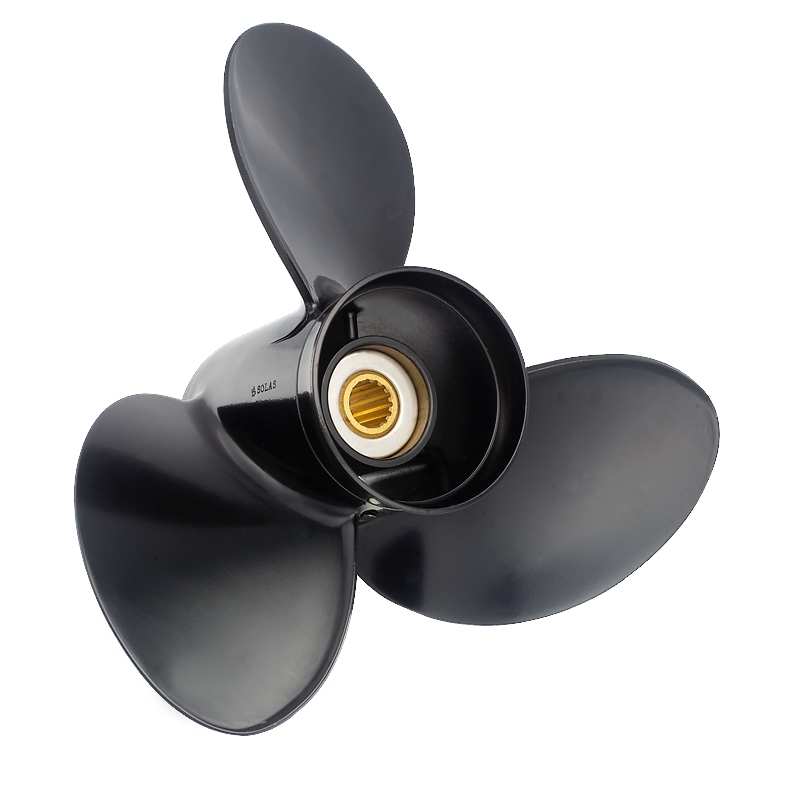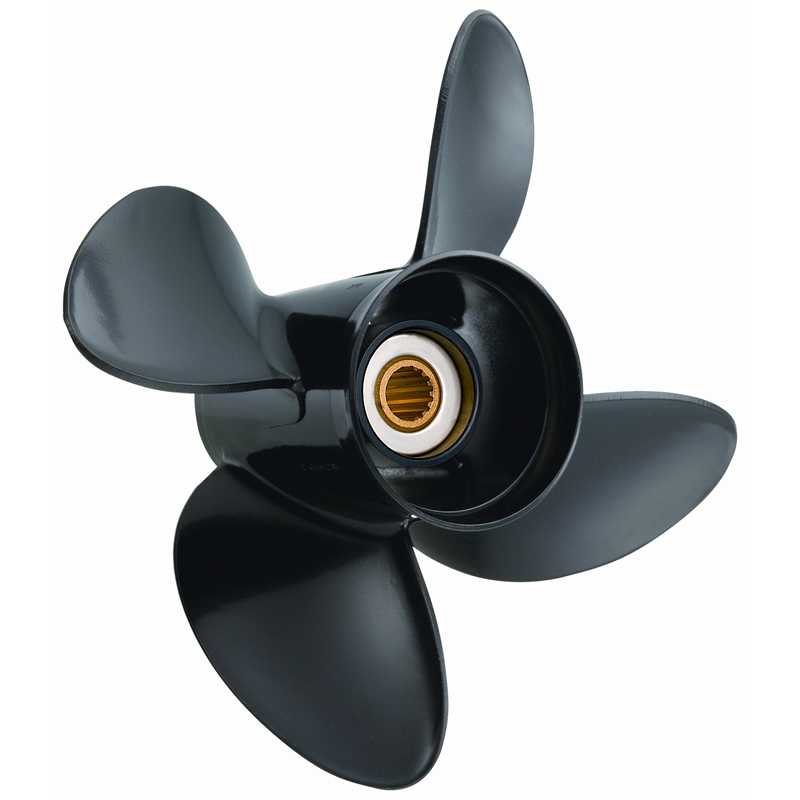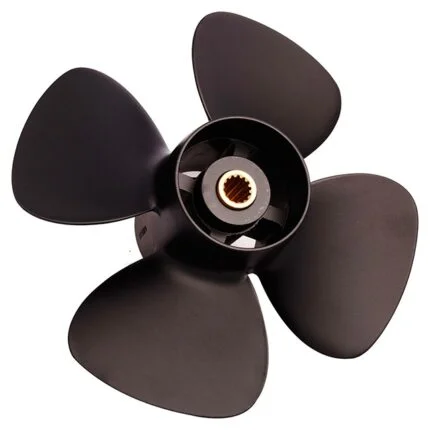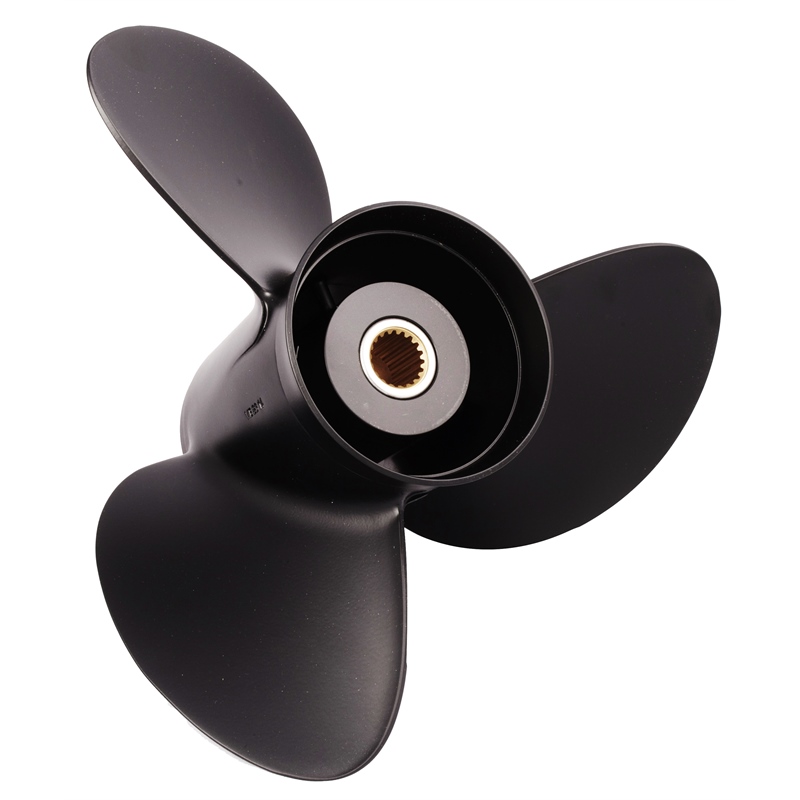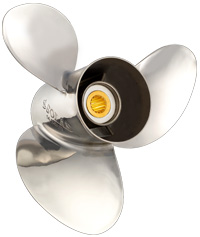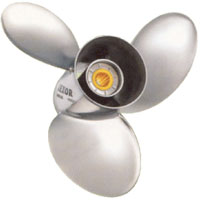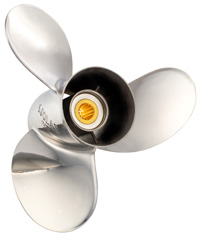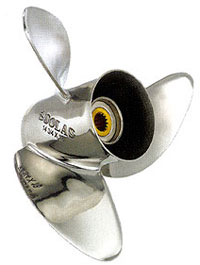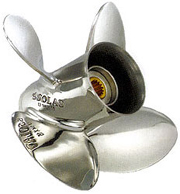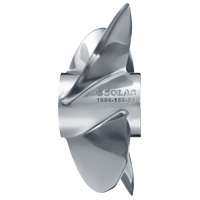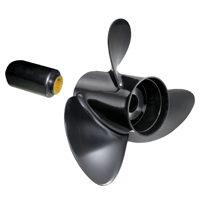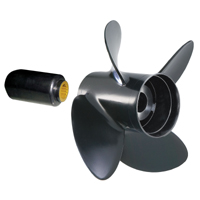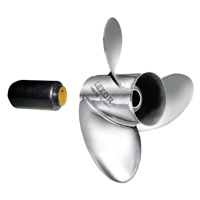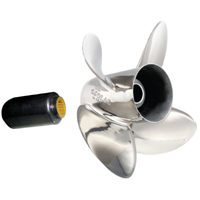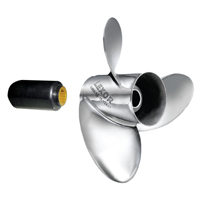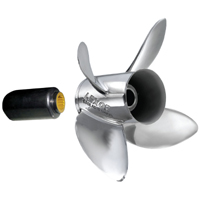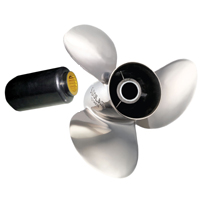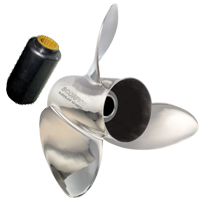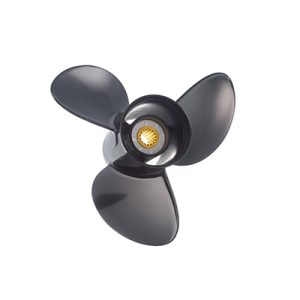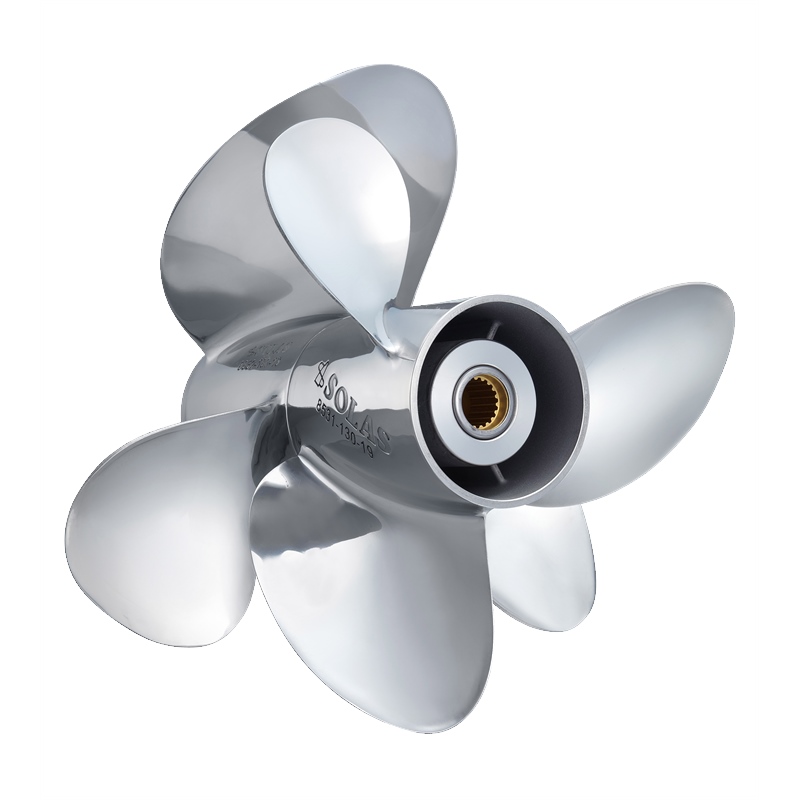
A 3-blade propeller usually offers top speed performance while a 4-blade propeller provides a maximum thrust and smooth cruising operation.
In most cases, right hand propellers are used for single engine applications and one left hand propeller is used for twin engine applications to achieve better steering control.
Diameter is the distance across a circle encompassing all of the propeller blades. (See Original Equipment Considerations item 2 below).
This is a technique used to enhance the performance of propellers under certain conditions. A cupped propeller will exhibit very high efficiency at high speeds as well as minimize cavitation under heavy loads.
Pitch is the theoretical distance a propeller will move through the water for each revolution (i.e. a 21” pitch propeller should move a boat forward 21” for each revolution, assuming there is no slippage).
Rake is a special design feature. Positive rake benefits from normal bow lift to permit the use of a larger diameter propeller, while negative rake can provide extra blade strength for use in very high speed applications.
1. Determine the year, brand, model and horsepower of your motor.
2. Calculate the diameter of the OEM propeller by measuring from the center of the shaft hole to the tip of a blade x 2 (Example: a measurement of 7-1/4” – a diameter of 14-1/2”).
3. Is the type of material aluminum or stainless steel?
1. Type of boat (cruiser, ski, runabout, bass, pontoon)?
2. Prop on boat now (brand, model, diameter, pitch, cupping)?
3. Engine RPM at wide open throttle (WOT)?
4. Speed of boat over water at WOT?
5. Normal operating altitude (motors lose 3% of power per 1000 ft.)?


